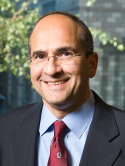A paradigm shift in U.S. breast reconstruction: Part 2. the influence of changing mastectomy patterns on reconstructive rate and method Journal Article
| Authors: | Cemal, Y.; Albornoz, C. R.; Disa, J. J.; McCarthy, C. M.; Mehrara, B. J.; Pusic, A. L.; Cordeiro, P. G.; Matros, E. |
| Article Title: | A paradigm shift in U.S. breast reconstruction: Part 2. the influence of changing mastectomy patterns on reconstructive rate and method |
| Abstract: | BACKGROUND:: The aims of the current study were to (1) measure trends in the type of mastectomy performed, (2) evaluate sociodemographic/hospital characteristics of patients undergoing contralateral prophylactic mastectomy versus unilateral mastectomies, and (3) analyze reconstruction rates and method used following different mastectomy types. METHODS:: Mastectomies from 1998 to 2008 were analyzed using the Nationwide Inpatient Sample database. Mastectomies (n = 178,603) were classified as either unilateral, contralateral prophylactic, or bilateral prophylactic. Reconstructive procedures were categorized into either implant or autologous. Longitudinal trends were analyzed with Poisson regression and sociodemographic/hospital variables were analyzed with logistic regression. RESULTS:: Unilateral mastectomies decreased 2 percent per year, whereas contralateral and bilateral prophylactic mastectomies increased significantly by 15 and 12 percent per year, respectively (p < 0.01). Independent predictors for contralateral prophylactic mastectomy (compared with unilateral mastectomy) were patients younger than 39 years, Caucasian and Hispanic race, private insurance carriers, treated in teaching hospitals, and from South and Midwest regions. Contralateral prophylactic mastectomy is the only group with increased reconstruction rates throughout the study period (p < 0.01). Although implant use increased for all mastectomy types, it remains greater in bilateral and contralateral prophylactic mastectomy. CONCLUSIONS:: There is increasing use of bilateral mastectomies in the United States, particularly in patients with unilateral cancer. Although implant use has increased for all mastectomy types, they are used most commonly following bilateral and contralateral prophylactic mastectomies. Changing mastectomy patterns are one factor underlying the paradigm shift away from autologous tissue to implant-based reconstruction. CLINICAL QUESTION/LEVEL OF EVIDENCE:: Risk, III. Copyright © 2013 by the American Society of Plastic Surgeons. |
| Journal Title: | Plastic and Reconstructive Surgery |
| Volume: | 131 |
| Issue: | 3 |
| ISSN: | 0032-1052 |
| Publisher: | Lippincott Williams & Wilkins |
| Date Published: | 2013-03-01 |
| Start Page: | 320e |
| End Page: | 326e |
| Language: | English |
| DOI: | 10.1097/PRS.0b013e31827cf576 |
| PROVIDER: | scopus |
| PUBMED: | 23446580 |
| DOI/URL: | |
| Notes: | --- - "Export Date: 1 April 2013" - "CODEN: PRSUA" - "Source: Scopus" |
Altmetric
Citation Impact
BMJ Impact Analytics
MSK Authors
Related MSK Work









